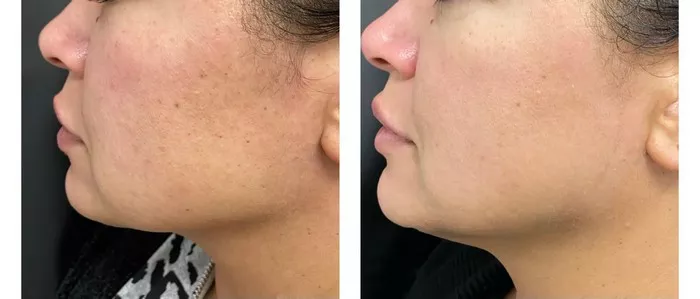Freckles and moles are both common skin conditions that can appear on the body. Freckles are small, flat, and often brown or tan spots that appear on the skin, while moles are typically larger and can be raised or flat. In this article, we will explore whether a freckle can turn into a mole and discuss some of the signs to look out for.
The Difference Between Freckles and Moles
Before we dive into whether a freckle can turn into a mole, it’s important to understand the difference between the two conditions. Freckles are caused by an increase in melanin, the pigment that gives color to the skin. They are typically small and flat and can appear anywhere on the body, but are most commonly found on the face, arms, and chest.
Moles, on the other hand, are clusters of melanin-producing cells that can appear anywhere on the body. They can be raised or flat and can range in color from brown to black. Moles can be present at birth or can appear later in life, and they can vary in size and shape.
Can a Freckle Turn into a Mole?
While freckles and moles are different conditions, it is possible for a freckle to turn into a mole. This is because both conditions are caused by an increase in melanin production in the skin. However, it is important to note that not all freckles will turn into moles, and the transformation is not common.
If a freckle does turn into a mole, it is typically a gradual process that occurs over a period of months or years. During this time, the freckle may become darker in color and may also become raised. It is important to monitor any changes in the appearance of a freckle, as this can be a sign of skin cancer.
Signs of Skin Cancer
Skin cancer is a serious condition that can be caused by exposure to UV rays from the sun or tanning beds. If a freckle or mole begins to change in appearance, it is important to have it checked by a qualified medical professional. Some of the signs of skin cancer include:
Asymmetry: If one half of the freckle or mole does not match the other half in size or shape, this can be a sign of skin cancer.
Border: If the border of the freckle or mole is irregular or blurred, this can be a sign of skin cancer.
Color: If the color of the freckle or mole is not uniform and contains shades of brown, black, or pink, this can be a sign of skin cancer.
Diameter: If the diameter of the freckle or mole is larger than a pencil eraser, this can be a sign of skin cancer.
Evolving: If the freckle or mole is changing in appearance over time, this can be a sign of skin cancer.
Treatment Options for Skin Cancer
If a freckle or mole is found to be cancerous, there are several treatment options available. The most common treatment is surgery to remove the cancerous cells. In some cases, radiation therapy or chemotherapy may also be necessary.
Prevention of Skin Cancer
The best way to prevent skin cancer is to protect your skin from UV rays. This can be done by wearing protective clothing, using sunscreen with an SPF of at least 30, and avoiding tanning beds. It is also important to monitor any changes in the appearance of freckles or moles and to have them checked by a qualified medical professional if necessary.
Conclusion
While it is possible for a freckle to turn into a mole, this transformation is not common. However, it is important to monitor any changes in the appearance of freckles or moles, as this can be a sign of skin cancer. By understanding the signs of skin cancer and taking steps to protect your skin from UV rays, you can reduce your risk of developing this serious condition.
FAQs
1. Can a beauty mark turn into a mole?
Yes, a beauty mark, also known as a nevus or mole, can potentially evolve over time and become more prominent or change in appearance. While most moles are harmless, some may undergo changes such as darkening, enlargement, or irregular borders, which could indicate potential health concerns. It’s essential to monitor any changes in existing moles and consult a dermatologist if you notice any suspicious changes or new growths.
2. Are freckles permanent?
Freckles are typically permanent pigmentation marks on the skin that develop due to genetics and sun exposure. While they may fade slightly over time, especially with reduced sun exposure, freckles often persist throughout life. However, certain treatments such as laser therapy or chemical peels may help lighten or reduce the appearance of freckles for those who wish to minimize their visibility.
3. Why has a mole suddenly appeared?
The sudden appearance of a mole can be concerning and may warrant evaluation by a dermatologist. While some moles may develop gradually over time due to factors such as sun exposure or hormonal changes, a sudden onset of a new mole could potentially indicate abnormal cell growth or other skin conditions. It’s essential to have any new or changing moles examined by a healthcare professional for proper assessment and monitoring.
4. Why did my freckle fall off?
Freckles are pigmentation marks caused by melanin clustering in the skin cells and are generally considered benign. While it’s uncommon for freckles to “fall off” spontaneously, changes in freckles or moles, including disappearance or loss of pigmentation, should be evaluated by a dermatologist. In some cases, the apparent disappearance of a freckle may be due to factors such as exfoliation, sun exposure, or skin renewal processes, but it’s essential to rule out any underlying skin conditions or health concerns.


